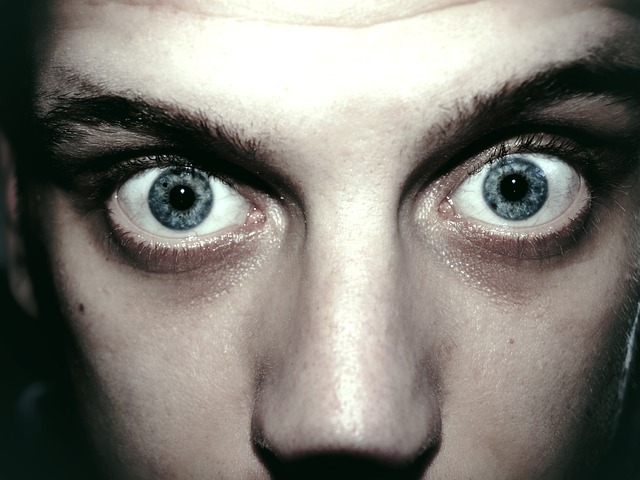Body Language in a Mask Era
 How do you overcome the challenges of reading body language in a Covid era? Masks cover some of the signals we use to interpret our clients’ and colleagues’ facial expressions.
How do you overcome the challenges of reading body language in a Covid era? Masks cover some of the signals we use to interpret our clients’ and colleagues’ facial expressions.
Masks enable us to spend more time focusing on a person’s eyes. Yet, reading body language is nothing new for nurses accustomed to working in surgical areas, where reliance on masks emphasizes observing eyes.
We’ve been trained as nurses to make assessments, complete observations, and interpret our patients’ body language. We carry that skill into our interactions within the legal world.
An attorney may ask you to interview a potential plaintiff or speak to a defendant. As an LNC, you might be involved in these kinds of assessments of offering your thoughts on whether the plaintiff or defendant is telling the truth. Your observation of body language plays into this judgment.
In a masked world, we’re focusing anew on reading the body language reveal through eyes. These tips assume you are wearing a mask and looking at a person with a mask on.

The Head and Face are Critical in Communication
When we are interacting with somebody, it is mostly their head and face that we can most easily observe. We effortlessly look at the various signs they give out. That is the reason why it is so important to understand what a person’s head and face say when they are interacting with us.
The Role of Head and Face in Body Language
Six facial basic expressions are universally recognized. No matter what country or race a person belongs to, he naturally recognizes and understands what these expressions mean. These are happiness, sadness or sorrow, disgust, anger, surprise, and fear. Scientists theorize that understanding these expressions is a genetic rather than learned ability that every person has.
Beyond these six expressions, the face and the head can convey many other meanings and emotions. Anyone can learn about their meanings through careful study and patient observation of the people they meet. This is exactly how experts in body language learn to “read a person” without the need for words or verbal communication.
The head can provide hints that indicate a person’s inner emotions and thoughts. First, where the head is directed also determines the general direction of the entire body. The head can be directed forward, turned to the left or right, or backward. All these have certain meanings. Also, head movements such as nodding also give off specific signals useful in interpreting body talk.
Head Signals – What Do They Mean?
Here are a few examples of head movements and their meanings:
- Head nodding generally means agreement. Slow head nodding can mean attentive listening, but it can be faked by a person who nods out of politeness but is not really interested in the topic. If the eyes also appear interested, then the slow head nodding is probably not faked.Fast nodding, meanwhile, can mean impatience, as if the person is saying, “Hurry up!” In a conversation, fast nodding tells the speaker that he has already covered the topic enough and should move on to his next point.
- Head shaking is the opposite of nodding, and it indicates disagreement. The sideways movement of the head can also mean disbelief, frustration, and annoyance.
- A head that is held up indicates alertness, and at times, neutrality or objectivity. The person is listening openly, without any bias.
- A head that is held up high in the air indicates arrogance or superiority. This is reinforced by a chin that juts out.
- When the head is tilted to one side, this can mean thoughtfulness and interest. In some cases, it also indicates submission, vulnerability, or complete trust and faith in the other person.

Pay Attention to the Eyes
Let’s take a closer look at eyes. (Yes, I intended the pun.) No wonder people call the eyes the “windows to the soul” and convey much of what a person feels inside.
Many people instinctively feel that the eyes cannot and do not lie. What we see in a person’s eyes has to be the truth. From this widespread belief comes the familiar phrase “Look into my eyes,” which has the implicit suggestion that the eyes will reveal the truth when this is done.
Make Eye Contact with Me
Experts in body language agree: the eyes are often true reflections of a person’s inner thoughts and feelings. What is also quite fascinating is that most people seem to have an inborn ability to “feel” what the eyes are saying and “connect” with someone through the eyes’ silent but powerful language.
I’ll bet you’ve met people who have trouble making eye contact. You might, like me, wonder if the person is trying to hide something. Or is she simply uneasy? If you know you tend to avoid eye contact, note that it will be harder for others to interpret your communication.
Eye Dilation and Direction
If the eyes are dilated or seem to be wide open, it may mean that the person is interested in the topic or in the person to whom he is talking. Dilated eyes also indicate focus or concentration. In other cases, we know as nurses that they can mean that the person has been taking drugs (certainly not what we expect to see on an attorney’s face!)
-
- Where the eyes are directed can also be significant. If they are looking
at the side
- , the person may be feeling guilty or want to hide something. If the eyes are looking down, he may be feeling shameful or subservient. But these interpretations are not correct one hundred percent of the time. It will take experience to learn how to correctly gauge what the eyes are saying.
-
- When the
eyes look toward the righ
- t, this means that the brain is imagining or creating certain thoughts. Thus, eyes looking at the right can mean that the person is lying, or fabricating something in his mind while he is speaking. He could also be simply guessing or telling a made-up story.
-
- In contrast, when the
eyes look toward the left,
- this means that the brain is recalling or remembering something. This is a good indication that the person is being truthful. He is remembering things, not making them up.

Right and Left Brain
The explanation for this lies in the so-called right-brain and left-brain functioning. The right brain is associated with creativity, while the left-brain has to do with cold facts and memory. Where the eyes go indicates which side of the brain is active.
Right-looking eyes, or right-brain functioning, is creative and, therefore more likely to be linked to lies and fabrications. Left-looking eyes, or left-brain functioning, is concerned with memory and the remembrance of facts (without altering them).
Detectives and crime investigators use the eyes’ side movements to help them gauge if a witness or suspect is truthful. However, they are also aware that right-looking eyes do not always mean the person is lying. He may be unsure or speculating, or he simply does not know the answer to the question asked.
You know that when a person crinkles their eyes, they are probably thinking hard; and you know that when a person rolls up their eyes, they are indicating their non-acceptance or unwillingness for something.
Eye Signals
We learn a lot about another person by recognizing common signals: no one has to be taught how to recognize different looks in the eyes: a glazed or blank look, a penetrating look, a surprised look, eyes overcome with emotion that are about to cry, a look that caresses lovingly, and eyes that hide something out of guilt or shame. It is difficult for most people to explain how they know the exact emotion or message being conveyed by the eyes; they just know.

 Pat Iyer is president of The Pat Iyer Group, which develops resources to assist LNCs to obtain more clients, make more money, and achieve their business goals and dreams.
Pat Iyer is president of The Pat Iyer Group, which develops resources to assist LNCs to obtain more clients, make more money, and achieve their business goals and dreams.
Pat’s related websites include the continuing education provided on LNCEU.com, the podcasts broadcast at podcast.legalnursebusiness.com, and writing tips supplied at patiyer.com.
Get all of Pat’s content in one place by downloading the mobile app, Expert Edu at www.legalnursebusiness.com/expertedu. Watch videos, listen to podcasts, read blogs, watch online courses and training, and more.
